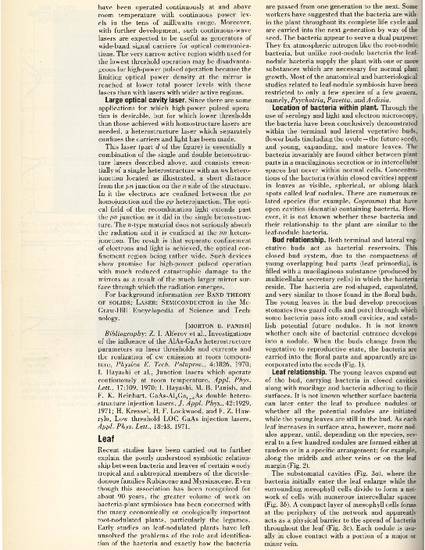
Recent studies have been carried out to further explain the poorly understood symbiotic relationship between bacteria and leaves of certain wood y tropical and subtropical members of the dicotyle donous families Rubiaceae and Myrsinaceae. Even though this association has been recognized for about 90 years, the greater volume of work on bacteria-plant symbioses has been concerned with the many economically or ecologically important root-nodulated plants, particularly the legumes. Early studies on leaf-nodulated plants have left unsolved the problems of the role and identification of the bacteria and exactly how the bacteria are passed from one generation to the next. Some workers have suggested that the bacteria are within the plant throughout its complete life cycle and are carried into the next generation by way of the seed. The bacteria appear to serve a dual purpose: They fix atmospheric nitrogen like the root-nodule bacteria, but unlike root-nodule bacteria the leaf nodule bacteria supply the plant with one or more substances which are necessary for normal plant growth. Most of the anatomical and bacteriological studies related to leaf-nodule symbiosis have been restricted to only a few species of a few genera, namely, Psychotria, Pavetta, and Ardisia.
Available at: http://works.bepress.com/harry-horner/128/

This entry is published as Horner, HT, Jr. 1972. Leaf. McGraw-Hill Yearbook of Science and Technology, McGraw-Hill, New York. pp. 274-276. Posted with permission.